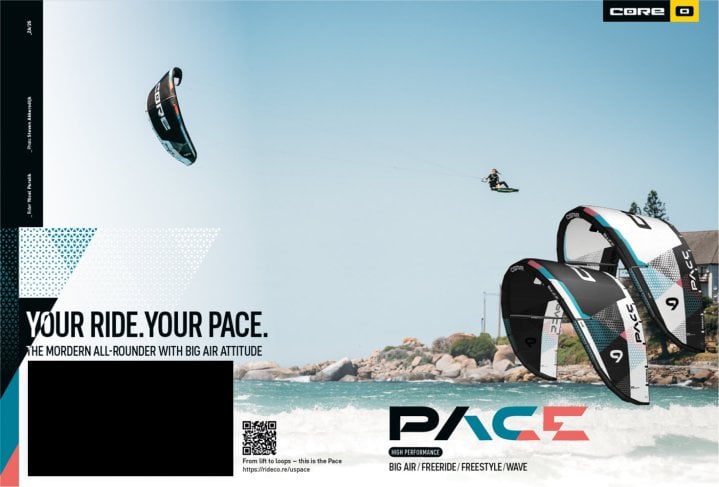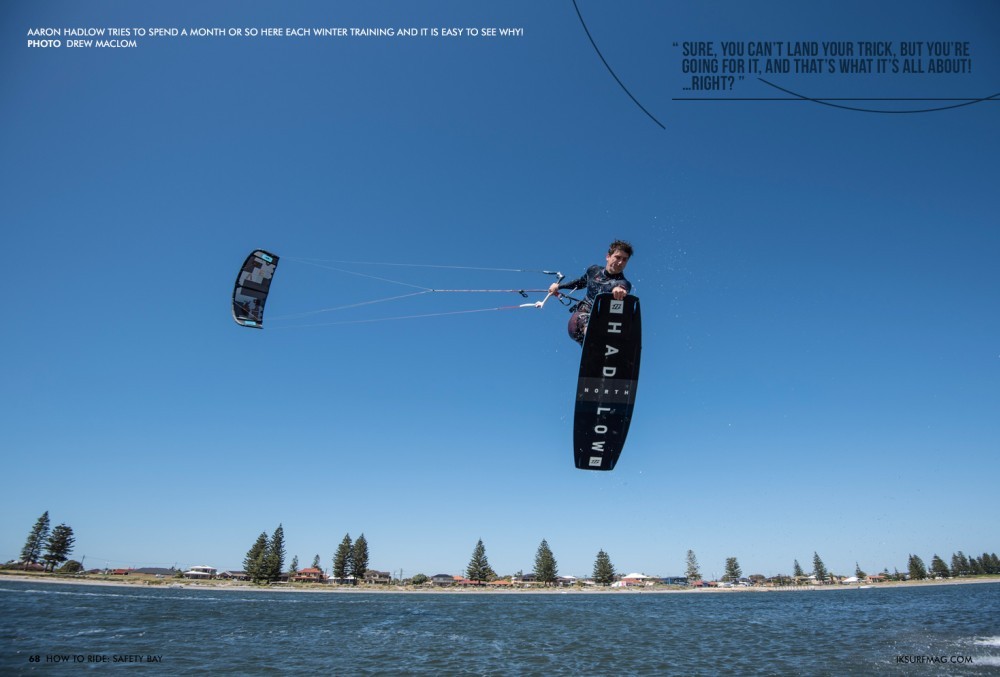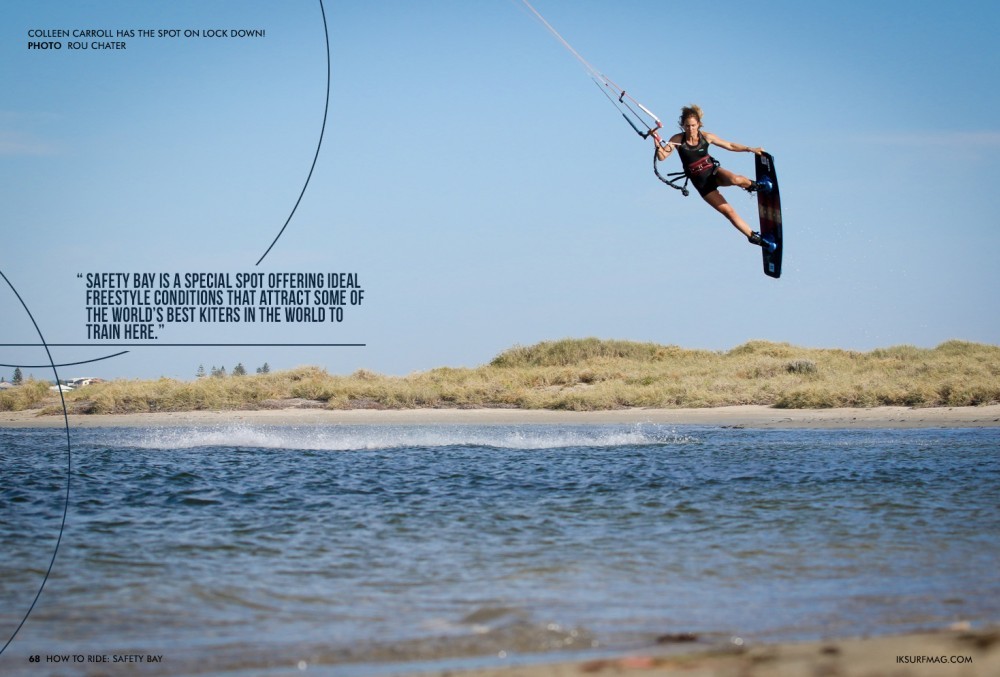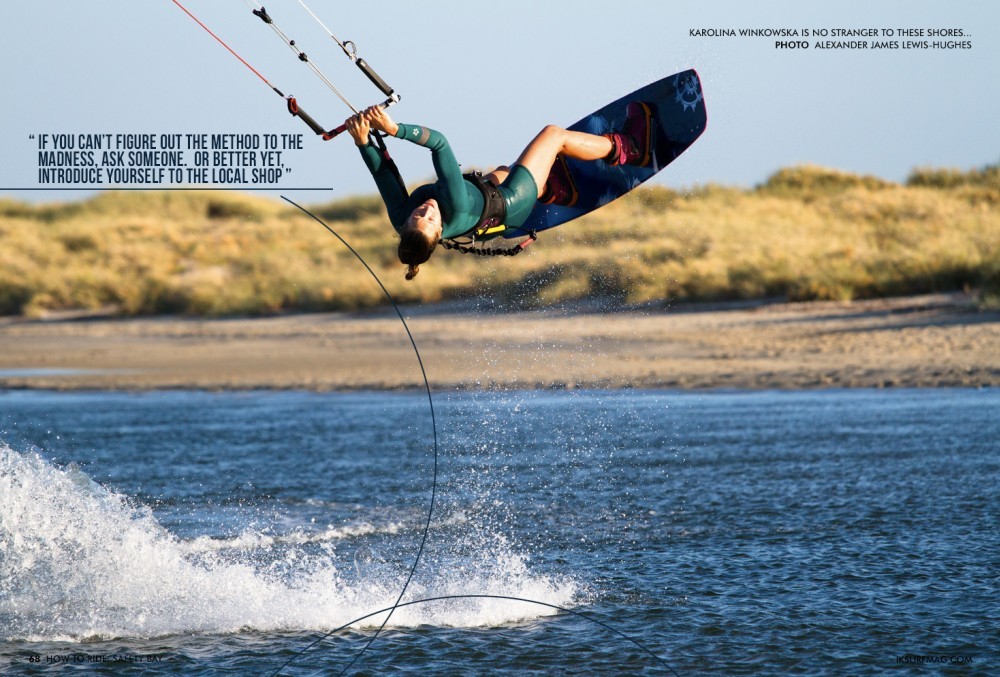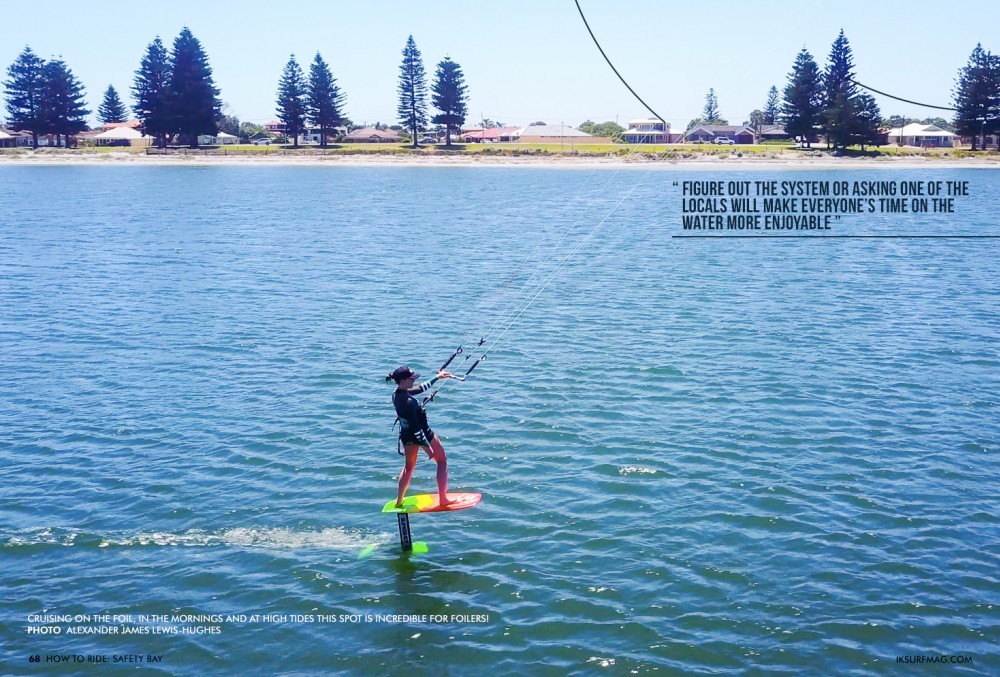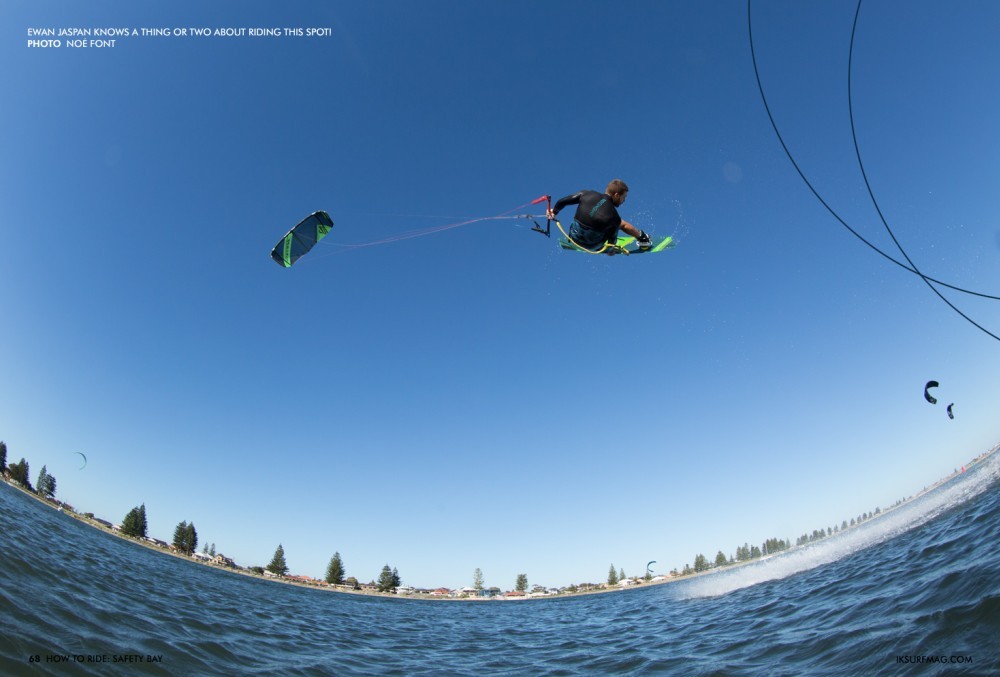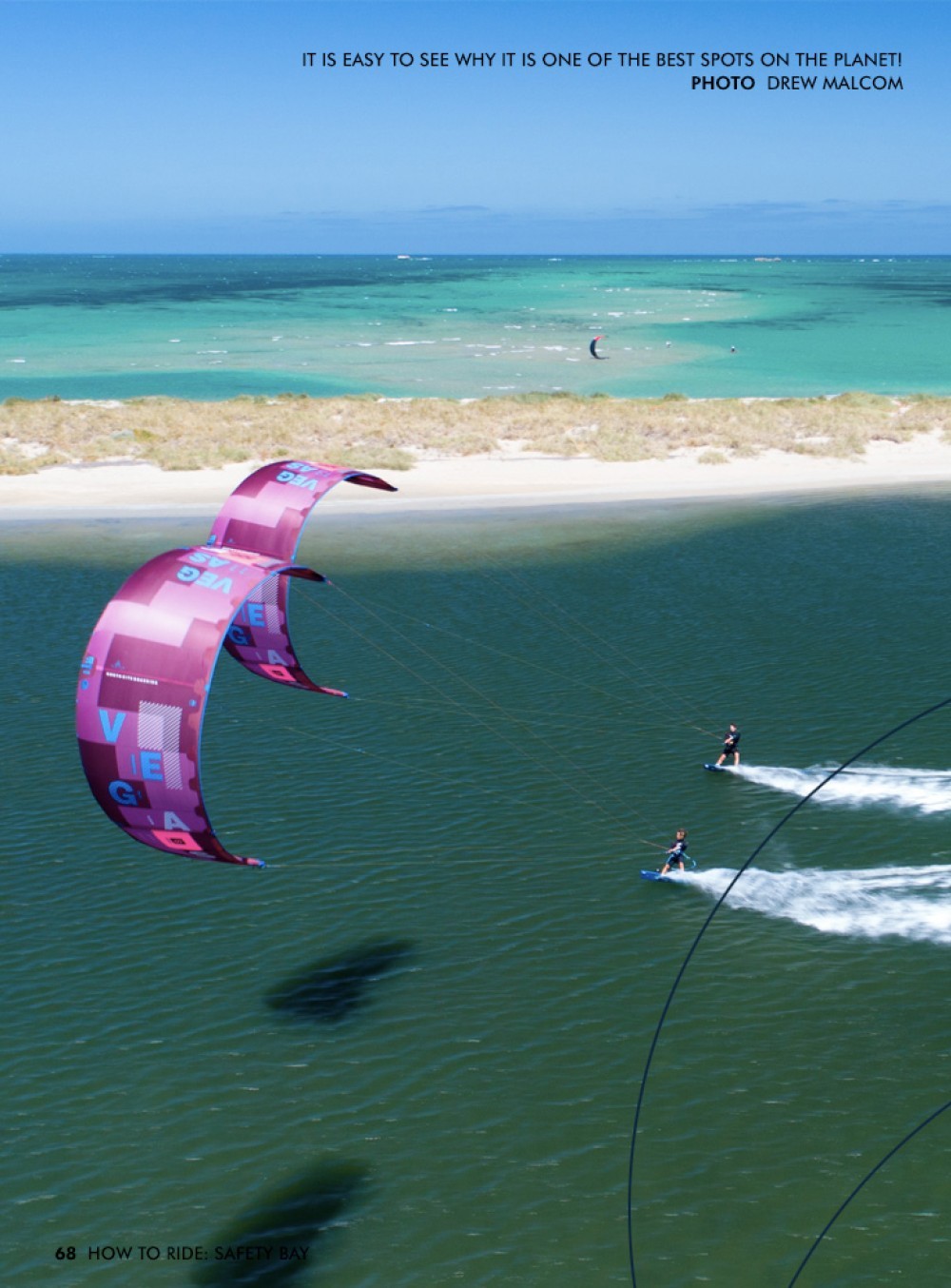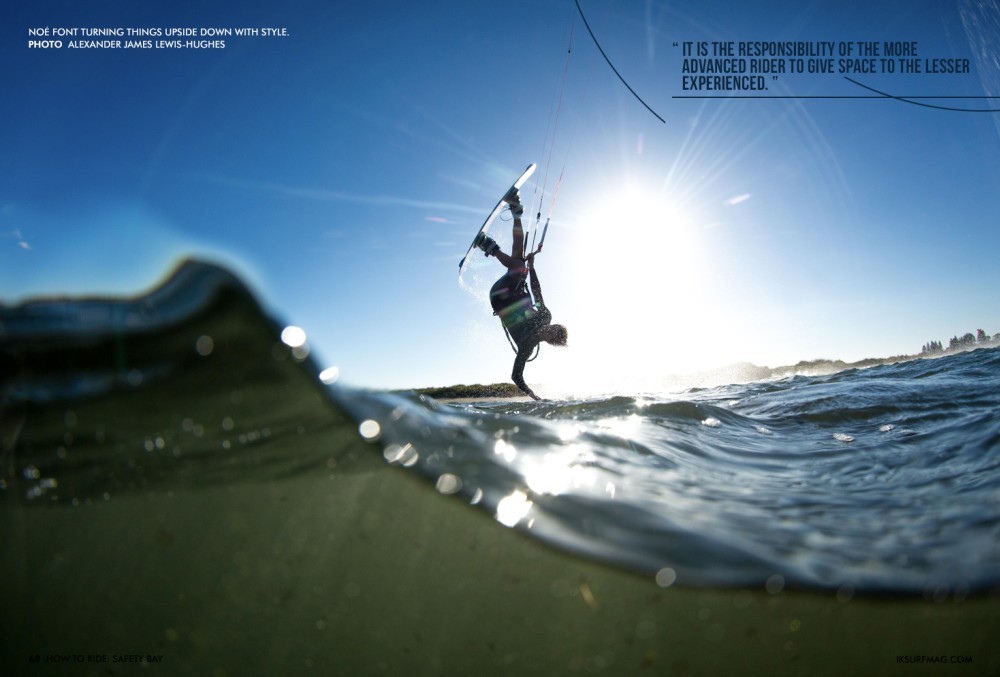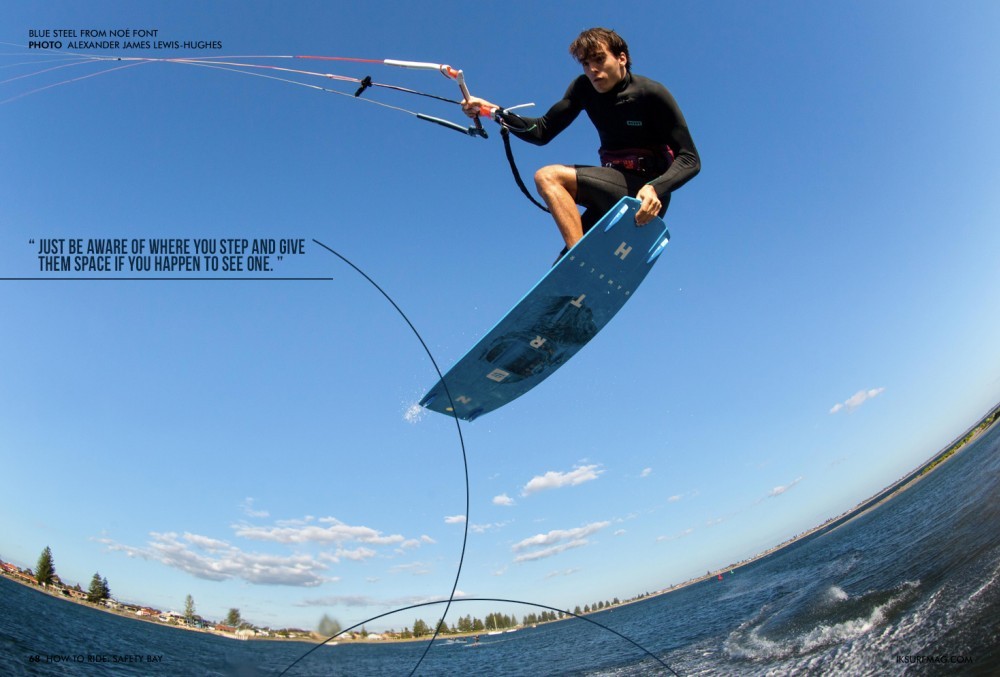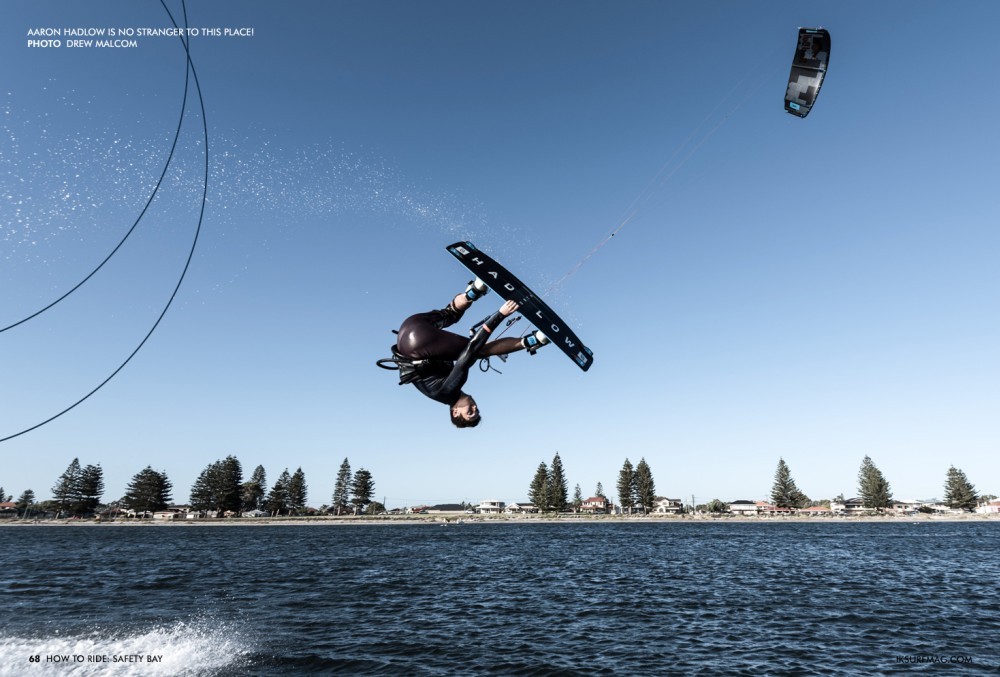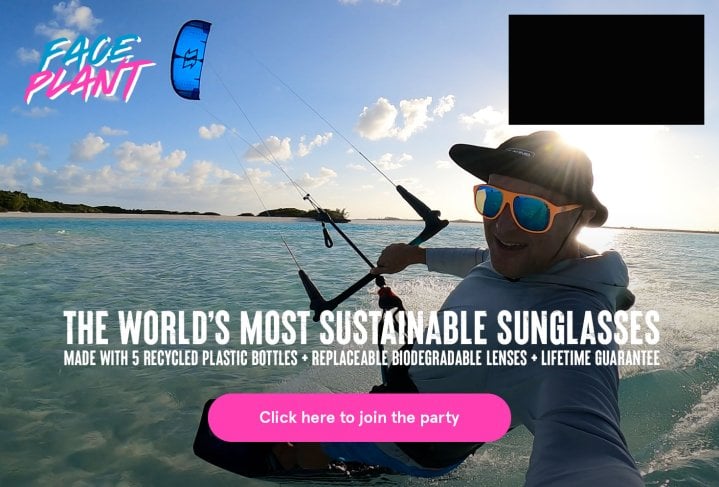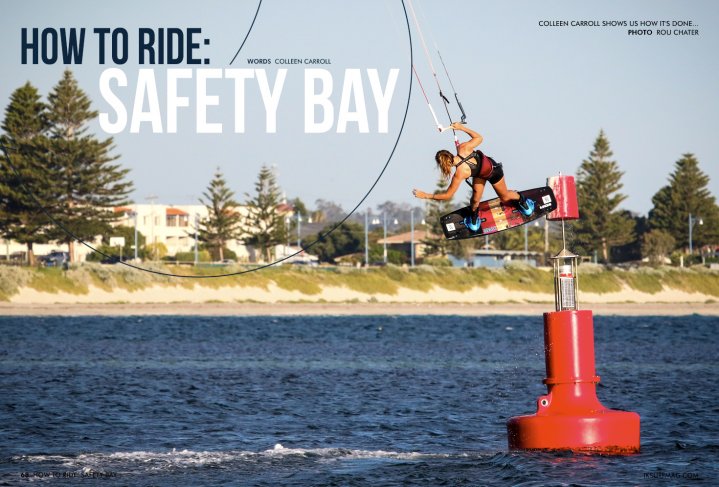
How To Ride: Safety Bay
Issue 68 / Tue 10th Apr, 2018
In our continuing how to ride feature we look at the intricacies of riding a small flat water spot like Safety Bay. If everyone plays nice hundreds of kiters can have a great time in a small spot. However, it only takes one person to turn the spot on its head and make it dangerous for everyone. Don’t be that guy or gal, read Colleen’s piece and make yourself a better more considerate rider wherever you kite!
Continuing our series of "how to" spot related guides we asked Colleen Carroll to give us the low down on Safety Bay. While it might not seem at first glance like a tricky spot to ride, the size of the bay itself and the sheer number of kiters means it has its own set of rules. Even if you never plan to visit this kiting Mecca, many other spots share similar characteristics, so check out this article, and maybe you'll learn a thing or two!
The Ins and Outs of Safety Bay
Let’s be honest, we’ve all been ‘that’ guy/gal. You know, the one who lets their excitement get the best of them and upon arriving at the spot as quickly as possible you get on the water. There's no time for niceties, you’ve travelled a long way to be here, or maybe you just came from a long day running a household or stuck to a desk at work. Either way, you’re jonesing for a session, and now you’re here. You immediately take to the water, you start your cruises back and forth, or you start hucking your biggest hardest move. Sure, you can’t land your trick, but you’re going for it, and that’s what it’s all about!…Right?
Not Always. You’ve skipped a few major steps here, and you’re not alone, many kiters do it. At popular kite spots around the globe, there seems to be a trend that is catching on and is ever prevalent at one of my most favourite kite spots, Safety Bay, Western Australia. The trend is for kiters to ‘show up and blow up’ so to speak, without scoping the spot, asking what the do’s and don’ts are, assessing how to ride cordially in a relatively small space with many other people. Last, but definitely not least, riders are forgetting to slap some high fives with the people making sure we all have continued access to the said spot.
You might be sitting there reading this saying, ‘well I would never!’ and maybe you wouldn’t. Perhaps you are of the more considerate sort and if so, more power to you, keep doing you. However, there are still likely some useful tips and pointers here we can all apply to kite spots we visit around the world as friendly reminders to all get along and play nice.
Rhythm & Flow
Safety Bay is a special spot offering ideal freestyle conditions that attract some of the world’s best kiters in the world to train here. The setup provides consistent onshore winds that blow perpendicular to a long sandy finger in effect creating a broad tack of perfectly flat water. The bay is relatively shallow, and the downwind side has a sandy bottom. Not only do these characteristics make it the spot for pro’s and aspiring pros to train, but it also makes it a great place to progress no matter what level you are at. That being said, with each passing year this ideal location becomes busier and busier, and without a little cooperation, the threat of overcrowding becomes an issue.
Have you ever watched a beehive? It may seem like total and utter chaos. This scene can resemble Safety Bay from Mid December – Mid March. Akin to a swarm of riders, it can appear hectic with kiters buzzing about every which way. However, with the right cooperation and flow amongst the participants, no matter how many bees come to the hive, it works. The reason being that the kiters have adopted a system of ‘right of way’ that goes beyond the traditional ‘starboard tack holds their ground’.
This system is mandatory in any kite spot that has a limited space or a ‘honey hole’ so to speak where the majority of riders want to throw their tricks in one small area. How this rhythm works is most simply put, that the riders pay attention to one another and adjust their direction of travel accordingly. It may be necessary to bend the standard right of way rules to allow each other the space to do what they want to do. Specifically, at Safety Bay, the sweet spot is predominantly a left foot forward tack. Therefore upon entering the water on your starboard tack, you should yield to the rider coming towards you who likely wants to throw a trick at the flattest water coming left foot towards the entrance of the bay.
This system works similarly to the way it works in surfing, the surfer sitting closest to the peak has the right to drop in on the wave. In kiteboarding, the kiter approaching the ‘sweet spot’ should have right of way. However, there are caveats, said kiter should be in a rotation with the other kiters waiting his/her turn and not short tack (or turn just in front of another kiter) to jump ahead in the rotation.
Locals Know Best
Generally speaking, if you show up to a new spot and aren’t sure of how things work or are still confused by the rotation, take a second to stop on the beach and observe the other Kiters on the water. If you can’t figure out the method to the madness, ask someone. Or better yet, introduce yourself to the local shop or school.
Specifically, at Safety Bay, there is a shop/school called WA Surf who has done a lot to keep access to this flat water haven a.k.a ‘the pond’ open to Kiteboarders. They also have a manicured grass launch in front of their shop that is perfect for advanced riders. When launching from the grass, you’ll have to walk down a narrow sand pathway to get to the pond. Another important tip you may receive from the WA Surf guys if you take the time to say hi is that this pathway also acts as a prime snake sunbathing area. It’s nothing to stress about but good to watch where you step!
This mantra can serve you well at any new kite spot you show up to. A few minutes before that first session to say hi and figure out the system or asking one of the locals will make everyone’s time on the water more enjoyable and as Safety Bay longtime local, Emerson Johnston puts it, “There is something that I see a lot of. The pond is an amazing flat water spot as we know, but it is a relatively small space considering how many of us cram in to there. It needs to work on a system. I believe all spots, especially advanced Freestyle spots work on a rotation system and if you rock up to a new spot, find someone that knows how it works and ask. You’ll make way more friends that way and have way better sessions! Oh and just remember to smile while you kite, that’ll make sure your session is better as well!”
Tipping Point
While Safety Bay has all the natural ingredients to be one of the very best freestyle spots in the world, it can reach a point of max capacity. Now, this isn’t a definitive number, it’s determined by the way the riders are cooperating in the pond. This number could be 13, or it could be 113. A few Kiters thrown into the mix who don’t care to observe, or are innocently oblivious, to the way the rest of the riders work together can take away from the experience of everyone riding in the pond that day.
Not to fault those who don’t realise these advanced ‘right of way’ adaptations, which reiterate the point to ask someone who knows.
In addition to the system benefiting everyone’s progression, it’s also for safety. Karolina Winkowska, world champion and Safety Bay pseudo-local, explains that even though she admittedly “was the biggest shmuck in the pond this year”. “At spots like the Pond in Safety Bay, you will encounter many riders going through their training routines. They won’t be smiling; they will be throwing tricks in front of you, jumping over your head and very often crash right next to you. It is super exciting to see them training, and I also love watching other riders practice new tricks. However, it is very important to respect that and avoid unnecessary interference or collisions with them. It’s not that hard to learn that these professional riders very often jump in the same place one after another and very often, don’t ride that long.”
Avoiding collisions is to everyone’s benefit and most easily achieved when both the person throwing the tricks and the person cruising back and forth are aware of the other’s intentions and are willing to amend their direction of travel so that both can ride in harmony. I’ve often been told from beginner or intermediate kiters that it is the responsibility of the more advanced rider to give space to the lesser experienced. And yes, I agree entirely that we should all go easy on those freshly diving into our fantastic sport. We want those beginners to have a good experience and get addicted to kiting just as we are.
However, I also feel that there needs to be responsibility from all participants. If you are in a lesson, this responsibility lies with your instructor who should choose a safe space for you to practice. If you are an independent kiteboarder who merely wants to cruise back and forth in the beautiful smooth flatwater of spots like Safety Bay, then more power to you. However, you to have the responsibility to be a competent fellow kiteboarder and work with those around you and work within the flow of the group as a whole.
Even one or two riders thrown into the mix can completely throw off this delicate balance if they choose to ignore the flow that the rest of the group establishes. This is when it becomes frustrating for everyone, newbie and pro-rider alike. Without cooperation, no one feels that they have their space to enjoy their session to the max.
Safety BETA
Who to say hi to: Drew and Emerson at WA Surf
Where to launch: For beginners to intermediates, park at one of the park parking lots along Safety Bay Rd and walk the path to the western end of the bay. You’ll have a sandy launch and likely plenty of other kiters to assist you with a launch or land.
What to watch out for: Remember that you are in Australia, there are snakes that live in the tall grasses around the pond. They don’t want to harm you so just be aware of where you step and give them space if you happen to see one.
When to go: November – March with peak months December - February
How to get there: Fly into Perth International Airport. You can rent a car from the airport or for better rates look at rent-a-cheapie rentals that you can pick up in Fremantle. If you are planning an extended stay, some will even choose to buy a vehicle on Gumtree.com and sell it before their departure. The drive from the Airport to Rockingham is about 1 hour.
Where to Stay: Most of the best options are found on Airbnb or other home rental apps or also gumtree.com. Look for something in Rockingham for closest proximity to the pond.
Where to go for Apres-Session Food & Libations: Rockingham is a very small town and doesn’t offer much in the way of nightlife or food options. While there are a few restaurants and cafes, it can be worth the drive at some point during your trip to head up to Fremantle and check out Little Creatures brewery or go for Saturday night in the park.
F.U.N
At the end of the day, it’s all about this three-letter word. Whether this is your last session before that big competition or your first session learning how to stay upwind. We are all here to have a good time and practice our sport that we enjoy doing. As Emerson mentioned, put a smile on and have a good time. A little common courtesy and friendliness can go a long way at any spot around the world, and I hope that this can serve as a gentle reminder to all Kiters to go with the flow, ask questions, slap some hi-fives and make friends with the locals.
Videos
By Colleen Carroll


